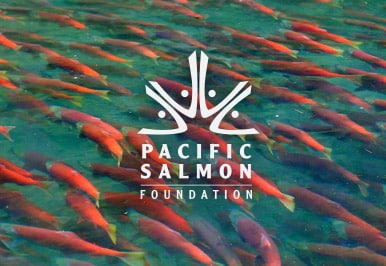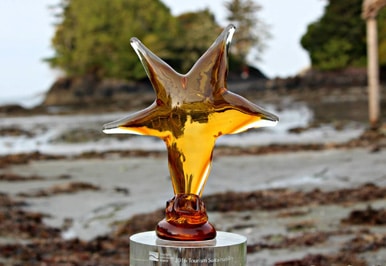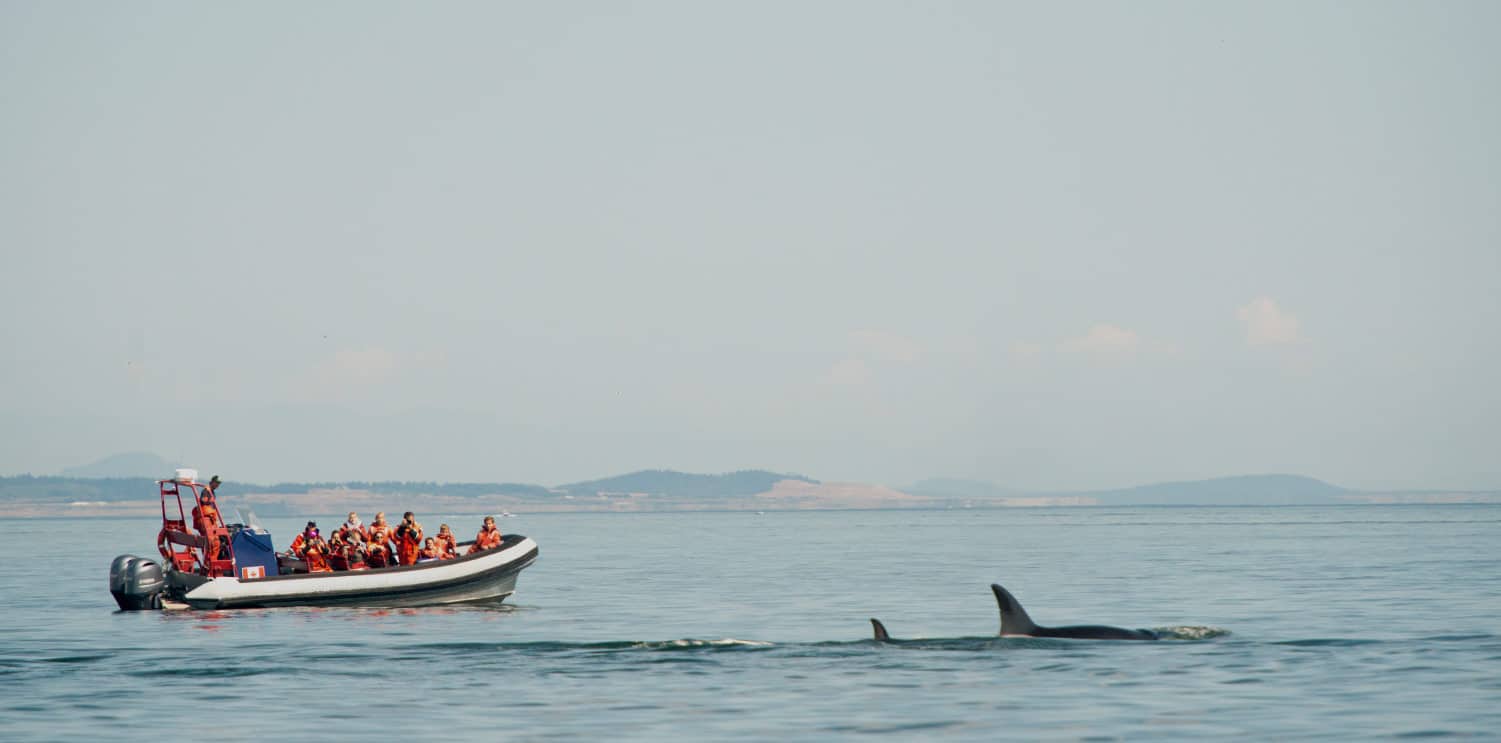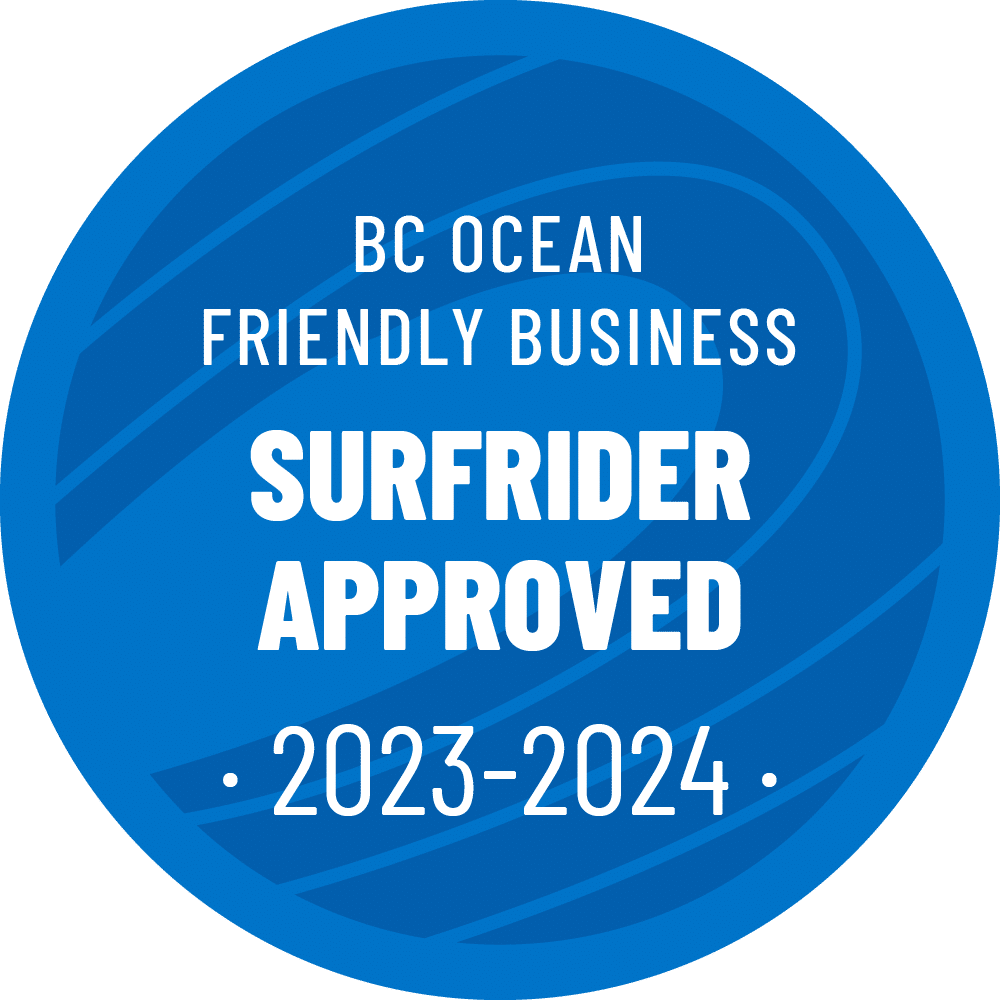OPERATION OF VESSELS IN THE VICINITY OF WHALES
A vessel shall approach an area of known or suspected whale activity with extreme caution.
A vessel within 1 km or 0.65 mile of a whale is considered to be in the vicinity of whales and is required to abide by all of these Best Practices Guidelines as are relevant.
If a vessel operator is unaware of the whales’ location he/she must maintain a vigilant watch for whales at all times. Mere observation of whale watching vessels in the distance does not fulfill this responsibility, as individual whale may be encountered anywhere and at any time.
Maintaining a vigilant watch often includes significant speed reductions.
A vessel within the vicinity of whales – within 1 km (0.65 mile) of a whale – is considered to be in the slow zone and must operate at no more than 7 knots. This reduced speed zone shall also be observed when disengaging the vicinity of whales as well.
As the vessel approaches, the distribution of whales and the positioning of other viewing vessels should be surveyed. Communication with other member vessels is strongly encouraged at this point (on the designated marine radio frequencies).
A vessel shall limit its time in the vicinity of a particular group of whales on any one tour to 60 minutes.
Vessels should limit the amount of viewing time to a maximum of 30 minutes in the vicinity of whales on days when there are more than 10 PWWA vessels within 1 km of that particular group of whales. On these occasions vessels should spend more of their tour observing other marine wildlife in other locations and searching for other groups of whales.
PARALLEL VIEWING SEQUENCE
When approaching vessels already engaged in viewing a whale or group of whales, the vessel operator must ensure his vessel moves to the outside of the vessels already accompanying these whales, and head in a direction parallel to the direction these whales are traveling. This is meant to maintain existing view angles of all vessels previously on scene.
Vessels should maintain heading and speed equal to the whales at all times while paralleling.
A vessel’s speed should be the same as the whale’s speed or slower. However, when traveling slower than the speed of the whales, a vessel relinquishes its priority sequence. This technique is generally used to disengage the vicinity of whales when the intention is to break away and return to port. When leading a group of paralleling vessels engaged in viewing whales, that vessel should keep pace with whales as to not block any vessels behind them. Furthermore, that vessel should not shut down without adequate notice to the vessels following behind.
1. When whales are within 1/2 mile of shore, vessels should maintain a seaward position and not within 1/8 mile (220 yards) of any shoreline that the whales are traveling along.
2. All sonar, depth sounders, fish finders and other underwater transducers should be shut off whenever a vessel is in the vicinity of whales.
DRIVER ETIQUETTE
Every PWWA driver will always operate in a manner respectful of other vessels and their passengers.
CAPTAIN CERTIFICATION
To maintain PWWA captain certification, all PWWA drivers must complete required training once per season.
MARINE PROTECTED AREAS
Race Rocks
The Pacific Whale Watch Association has worked collaboratively with all stakeholders and the Canadian Government in the development of these Best Practices Guidelines for the Race Rocks Marine Protected Area, which apply equally to all vessels, whether commercial or private, whether intending to view wildlife of otherwise transiting the area.
Vessels will allow for a speed transition by slowing their approach to Race Rocks such that speed at 1/8th mile (220 yards) from any rock or landmass is reduced to minimal wake and wash, relative to the condition of the sea state at the particular time. This Go Slow Zone extends 1/8th mile (220 yards) around every rock and landmass in the Race Rocks area.
Vessels in the Go Slow Zone will remain as close to mid-channel as is practicable between the major rock outcroppings know as North Race Rock, West Race Rock and Helicopter Rock. While in the Go Slow Zone vessels will transit the area with the current whenever conditions are suitable to do so.
Vessels exiting the area will allow for a speed transition.
Vessels will remain outside all of the Go Slow Zone whenever Killer Whales are present in the Go Slow Zone.
West Side of San Juan Island
Vessels will remain a minimum of 1⁄2 mile (880 yards) from the light beacon of the Light House at Lime Kiln State Park on San Juan Island when whales are in the vicinity.
Vessels will remain a minimum of 1⁄4 mile (440 yards) from the main shoreline of the west side of San Juan Island when between Mitchell Point to Cattle Point (facing south).











